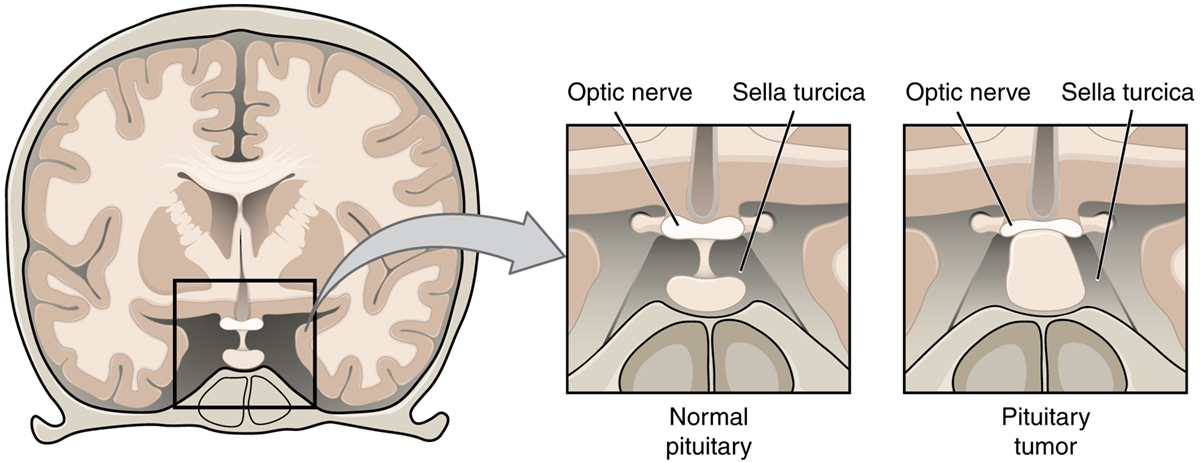
The pituitary gland is a small gland located at the base of the skull just below the optic nerve. It is in charge with production of many hormones which control and provide with proper functioning of other glands in human body.
Pituitary tumor is abnormal growth of the pituitary cells. Pituitary tumors can be benign or malign. In benign form of the disease the tumor only grows but it does not spread to other parts of the brain. Malign tumors invade and destroy surrounding structures and may spread to other parts of the brain. Fortunately, almost all pituitary tumors are benign. Furthermore, these tumors may be hormonally active or they do not produce hormones or other substances. Hormonally active pituitary tumors produce excessive amount of certain pituitary hormones.
Symptoms and Signs of Pituitary Tumors
Symptoms and signs of pituitary tumors are related to both direct growth and pressure of the tumor and occur due to a change in normal hormonal levels. The growth of the tumor causes compression of the optic nerve which eventually results in visual disturbances. In large tumors patients usually complain about headaches.
Increase in hormones leads to specific symptoms and signs depending on which hormone is increased. For example, prolactin- secreting tumors cause production of small amounts of milk and may cause stop in menstrual cycles. This tumor is also responsible for infertility in both genders. Pituitary tumors which produce excessive amount of growth hormone cause gigantism. If the tumor produces too much TSH there are symptoms and signs of thyroid dysfunction. Overproduction of ACTH leads to Cushing's syndrome.
Tumors of posterior part of the pituitary gland are rather rare. Still if they occur they may induce diabetes insipidus. Basic characteristics of this disease are increased thirst and passing large amounts of urine.
Diagnosing Pituitary Tumors
If there is elevation in certain hormones the doctor may assume patient is suffering from pituitary tumor and the patient then undergoes CT scan or MRI of the head. These two imaging methods successfully visualize the tumor. Neurologic testing gives information on whether there is a damage to the brain and cranial nerves by the tumor. Eye examination is also essential since the tumor may cause pressure onto the optic nerve and cause visual changes.
Treatment for Pituitary Tumors
Treatment for pituitary tumors includes surgery, certain drugs and/ or radiation therapy. Patients are most commonly treated surgically. The goal of the surgery is removal of the entire tumor and preservation of at least some of the normal pituitary gland. Prolactin-secreting tumors can be treated with specific drugs which reduce excessive production of prolactin. Radiation therapy is administered after operation or in case the tumor is inoperable.
Hormonal replacement is indicated in all patients who have undergone removal of the entire pituitary gland or in those pituitary gland does not function properly after radiation therapy.

















Your thoughts on this
Loading...